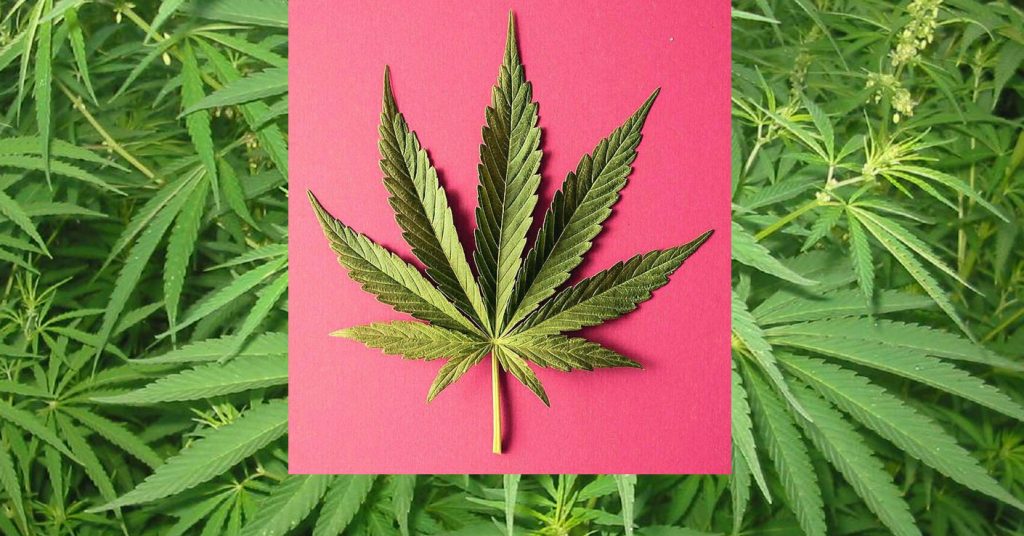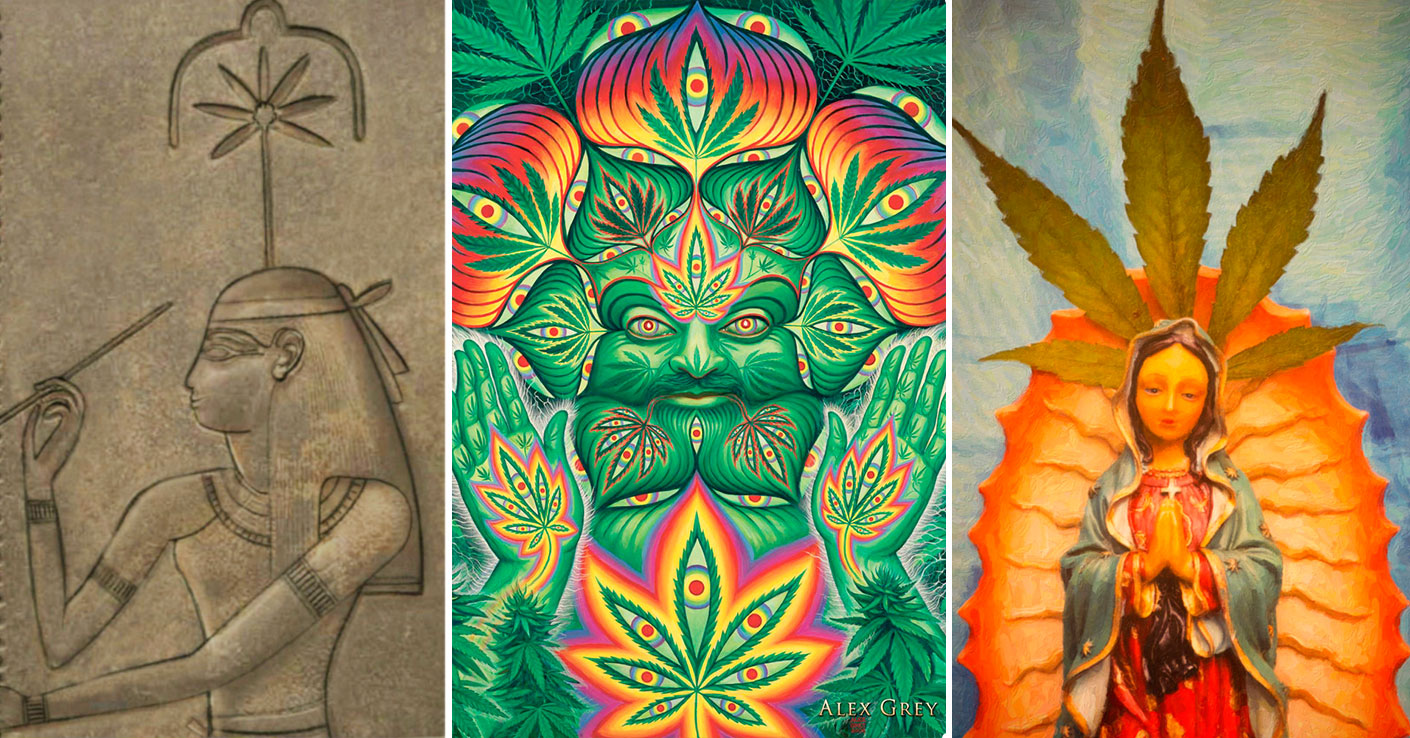- A Collective Open Apology for Response to Racist Language in the Women and Psychedelics Forum - December 3, 2018
- Who Is Cannabis? - June 19, 2017
Homo sapiens, and all the Homo species that preceded us, or cohabited with us for a part of our history, are in fact far younger than are the plants that we embrace. The Cannabaceae is the old family that includes the several Cannabis species (C. sativa, C. indica, and C. ruderalis) and their cousin, also our dear friend, hops (Humulus lupulus). The origins of this plant family date back ninety million years. Our genus, Homo, is currently considered to be a mere 2.8 million years old. So the ancestors of this plant that we so love were doing there own thing for a very long time before we two-leggeds showed up to appreciate their leafy descendants. The antecedents of the Cannabis we now know were hanging out with the dinosaurs, and with many stranger life forms that are now long gone. All that accumulated experience is in the Cannabis story, written right there in the genes of every bud of our beloved herb.
When humans personify a plant species, what that means is that we sense the persona that the plant presents, the character of the plant. Personification is something that even modern humans do, although mostly unconsciously. We name hurricanes, forest fires, diseases, then we talk about them in the terms of human qualities and motivations.
Who is She?
Cannabis has been a character in this same human drama for at least the past ten thousand years, and very likely much longer. She, the genus Cannabis, has been seen and felt as a being, or a deity, in multiple cultures. I say she, because both historically and right now in Western culture, that is the gender that so many of us experience when we engage with Cannabis.
Eight thousand years ago, Cannabis seeds were used as food in China. Six thousand years ago, the Chinese were cultivating an ancestor of Cannabis sativa for its stem fibers, as hemp for making cordage and weaving into textiles. We know the Chinese were employing cannabis plant parts as medicines for various ailments five thousand years ago. At least three thousand years ago, across Central Asia and perhaps farther, the seeds were widely used in rituals, as offerings in invocations and also left with the flowers in graves. It was widely used as incense that could affect anyone who breathed its ambient smoke. Meanwhile, Cannabis indica had become well established in the Indian subcontinent, where both ritual and medicinal uses took root. Twenty-five hundred years ago, Cannabis species and seeds were introduced to Northern Europe from Asia. Asia’s Silk Road must have traded and transported everything from the plant’s myths to its medicine. From the 1500s up until a mere eighty years ago, Cannabis was much appreciated here in North America as an exceptional herbal medicine and totally useful fiber source. Then the tables were turned, the government’s medical and legal establishment officially demonized the plant, and we are only now emerging from this absurd century of prohibition of the gifts of nature.
We know that the medicine, nourishment and the pungent incense of cannabis were valued during the past several millennia, but we don’t know so much about her history of personification in the many ethnic regions across Asia and Africa. There were smoky group rituals, soothing oils and effective medicinal teas. There were stories and songs about her, surely. There are some ancient literary references to how she was perceived.
In ancient China, Ma was the name of the deity resident in hemp, the extremely useful fiber that comes from the cannabis stem. Both the male and female plants are drawn in the pictogram for hemp, sitting inside a built shelter or home. (Cannabis species are dioecious, meaning they produce male and female flowers on separate plants. Wind is the pollinator that allows male pollen to fertilize the females.) Hemp has been a plant of fundamental utility to hundreds of generations of humans. Ma was therefore the spirit of she who grows, she who clothes us, she who binds, she who ties it all together. Textile and cordage species are essential to human cultures, and hemp has been appreciated as that most utilitarian of species since the days when everything grew wild and we were all nomadic. Hemp was still crucial to our materials when the great European sailing ships set out to seek the world’s riches, but by then 16th century Europeans, mostly Christian, were not so interested in the natural deities resident in the plants that grew the fibers for their ropes, sails and flags.
As a dedicated plant person myself, I have methods for getting to know a species. I am part botanist and part spiritualist. When, on the trail, I meet a species of plant that is new to me, I try to remember to follow a respectful protocol that I’ve developed. I really look at the plant, try to see the true form and texture of the plant, where and how its leaves connect to its stem, what its flower or seed reminds me of, which other species it’s growing near. I wonder what family might it be in, which I may guess if I know the signature features of its family, or perhaps I already know some of its cousins well. Then I ask, in my inner voice, “Who are you?” I give us time. Mind emptied and quieted, I await a sense of what arises in me as a reply. It might be an image or words or a name, but most likely it will be a feeling. I like to think that I can sense the feeling that the plant has of being itself in the world. But this is just my first introduction, the initial handshake. It takes a long time to really get to know a person, and the same is true for a plant. If I judged every person on my first impression of them alone, I might not care for so many fine people, and I probably would not actually know who they are. It takes attentive patience to get to know someone well, to trust them, to know that they may have various sides but that they are a good friend to me, or a reliable colleague. The same is true of plants, and especially of plants that we put in our bodies, that alter us. I have learned from years of instruction by native peoples, and from teaching students about plant knowledge and practices, that most humans have highly attuned skills in sensing, reading and understanding other humans. The skills are often intuitive, yet capable of tracking and filing many signals and different kinds of input. Those who are not trained in botanical morphology and taxonomic systems often feel at a loss to “read” a plant. One can, in time, learn to read a plant intuitively by doing it, by practicing. I choose to straddle the scientific and intuitive ways of knowing, and in fact find this an enchanting way to walk in the natural world. As a way to meet a new species, or get to know a plant you thought you knew already, I suggest beginning with the personal approach: Who are you? Why are you here? May I kneel down by you? Can we possibly get to know each other? Then before you do anything so rash as gobble it up, rub it on your body, or tear that unknown weed out of your garden, balance your inner sense with what you can learn by looking it up, from other resources and experts. At least I propose to you that quiet, intuitive attention is a technique worth trying, and it’s especially helpful for initiating a spirit-based relationship with Cannabis.

Mutualism is a relationship that benefits both parties, and that is what you’d have to say about the human-Cannabis relationship. By meeting the human need for fiber, food, medicine and world-softening ease, Cannabis has become a clearly indispensable ally. Humans have, reciprocally, served not only our own needs but also the needs of C. sativa and C. indica by propagating the plant nearly everywhere. We’ve selected for special traits to enhance each of its useful characteristics — length and tensile strength of its fibers, the nourishment in its seeds, the pain-relieving qualities of its leaves and buds, and the social, artistic, communication and spirit-enhancing qualities of its resinous flowers. Humans early on recognized these spiritual qualities too, as Cannabis has been buried in graves for millennia, presumably to ease the deceased’s transition to the afterlife, or as gifts to send with the spirit of the one leaving this plane. I tossed the cremated ashes of my beloved uncle onto the waves of the Pacific Ocean, along with some of the best bud I could find for him. Who knows how these gifts carry into the spirit world? When my grown children and I distributed the ashes of their father, we shared smoke in his honor, to commune with his spirit, to send him onward with that blessing of fragrance from the plant he loved above all others. I know that many other people do the same kind of rituals now. Not only has Cannabis long served as one who mercifully eases the suffering of the dying, but also her use has become a way to invoke and honor the spirits of those who’ve passed on.
I smoke very slowly: first set up my tray (which acts as an easily moveable, tiny altar), then a silent or spoken greeting in anticipation, a smoky breathe indrawn when I light up, a warm hello to the feeling that gently floods me, a big sigh, a lifting off of something from my physical frame. A large, gentle, lighter-than-air arm lightly embraces these weary shoulders; an opening happens. I may take a second toke. Then I feel her along my side, I feel her arm as she sits beside me. Little me, who feels as diminutive as a small girl next to her. The window in my mind opens to my beloved Big Sister. Here she is, I can count on her. She always shows up when I ask, she knows me; we are old companions. We chuckle from the joy of getting together again. I am so very grateful to have this beautiful, wise Big Sister in my life, she who helps me know what to take seriously and what to let go of. I feel so fully alive, in every cell. She is a gift from nature to us, a gift from the mystery itself.
Excerpted section by Kathleen Harrison from Cannabis and Spirituality: An Explorer’s Guide to an Ancient Plant Spirit Ally edited by Stephen Gray © 2016 Park Street Press. Printed with permission from the publisher Inner Traditions International. www.InnerTraditions.com
References
Take a minute to browse our stock:
Did you enjoy reading this article?
Please support Chacruna's work by donating to us. We are an independent organization and we offer free education and advocacy for psychedelic plant medicines. We are a team of dedicated volunteers!
Can you help Chacruna advance cultural understanding around these substances?













